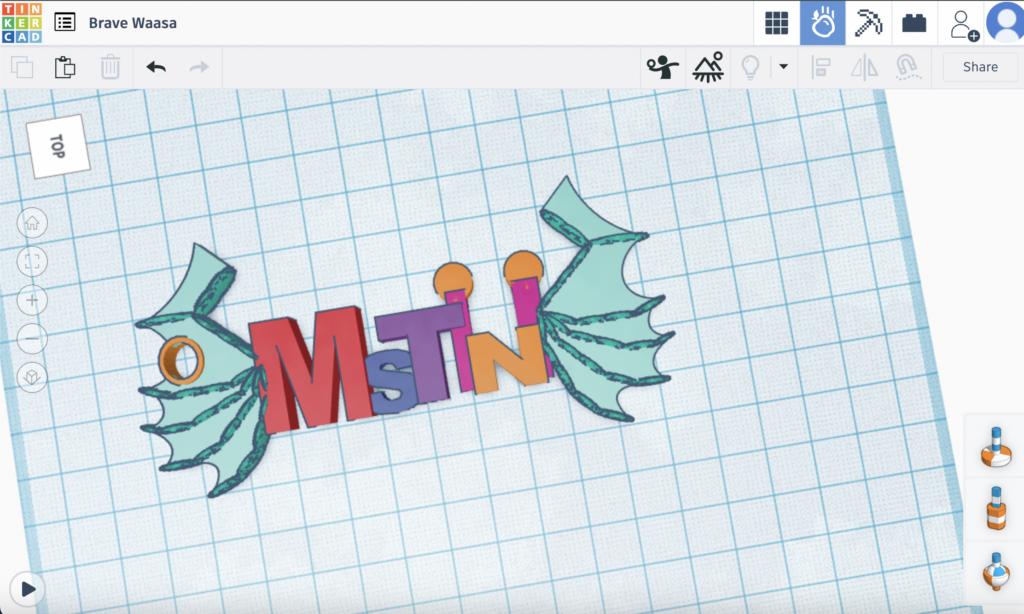
I had no idea 3D print was this accessible to us as UVic students. I would not have considered these technologies be in elementary schools until Rich said there were some printers in SD 61. That would be the biggest downfall with having cross-curricular material including 3D printers – the accessibility. I was under the impression the software was so fancy and so new that it would be extremely expensive. That assumption has changed today!
When I think about how I could use this tech for cross-curricular activities, I get a bit overwhelmed… All I can really think about is a “Applied Design, Skills, and Technologies” unit as well as a math unit. Broken down into different pieces however, those projects would hit quite a few curricular competencies in the upper elementary grades. In math, these tools can be very beneficial in conceptualizing 3D shapes and our spatial awareness. Specifically, this could be useful in determining how area of a shape differs or remains the same by its dimensions shifting. On the other side, I am not sure if these technologies would confuse children more because of the information overload it takes to simply start a project…
If you do not have access to a printer, you could work on 3D design and leave it unmade, but that is not as rewarding for the little ones. These 3D design softwares are super accessible and could be a good basis for a geometry lesson starting in grade 4 or 5.
As a decolonizing tool, there are some aspects that could support repairing something as opposed to throwing something away simply because one piece broke off. This is a direct attack on the consumer society we have. However, there is a danger of creating things with the 3D printer simply for the sake of creating something . Even if it uses biodegradable plastic, it stills gives into that capitalist, consumer society tendency. It would be important for the educator to make strong disclaimers on how we should be thinking about what we create and its uses.
I was happy to hear the printer isn’t using any more energy than say a lightbulb at 100 Watts. This and its use for creating letters that are only found in Indigenous languages for manipulation in class makes me feel a bit better about this technology. Personally, using a website like thingiverse.com is more aligned with how I would use these technologies. It eliminates a lot of the time necessary to design something. However, this is because I do not have a design background. Overall, I think the patience and regulation you need to use these 3D modelling tools will be a huge consideration for what age you might be using it for. That is the biggest consideration I will take in where I would like to apply this technology in my classroom.
Sorry, but comments are not enabled on this site.